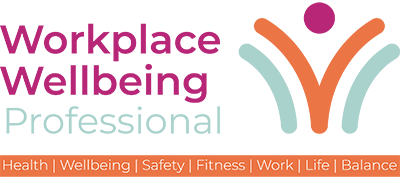Stress and anxiety accounted for nearly half of all mental health referrals in the last almost five years, new data shows.
RedArc, a provider of nurse-led health support through insurers and employee benefits schemes, reported this week that 49 percent of its referrals between 2020 and 2024 related to these two conditions, making them the most common it supports.
Other frequently referred conditions included depression and mood disorders, trauma such as post-traumatic stress disorder, eating disorders and psychotic conditions. These made up the remaining 51 percent.
The organisation said stress and anxiety are often downplayed in everyday conversation, leading to their seriousness being misunderstood. In practice, these conditions can trigger panic attacks, insomnia and ongoing physical health problems.
“Dismissing or downplaying stress and anxiety can prevent individuals from getting the help they need and contribute to worsening health and poor outcomes,” said Christine Husbands, commercial consultant at RedArc.
“It’s therefore vitally important that both insurers and employers recognise that these are legitimate medical conditions that require appropriate support and treatment.”
One-to-One Support Needed
RedArc warned that simply offering counselling on a self-referral basis may not be enough. People experiencing distress often need professional help to determine what kind of support would benefit them.
“When an individual is suffering with their mental health, support which includes an assessment from a professional ensures they get the right help,” said Husbands. “And that help must then be sufficiently comprehensive to genuinely assist them on their path to recovery, and this generally means it needs to be one-to-one, personalised, and offered by a specialist.”
Mental health issues such as stress and anxiety often affect sleep, energy levels and physical wellbeing. Support needs to be holistic, with access to appropriate therapies and signposting to further help, including local services and national charities.
RedArc said specialist mental health professionals are better equipped to assess and manage complex or overlapping conditions, and early diagnosis typically leads to better outcomes.
Resilience Is Key
While short-term support has value, the organisation urged employers and insurers to help individuals build resilience and adopt long-term coping strategies.
Building resilience and developing healthy coping strategies are essential components of this support, enabling people to navigate future difficulties more confidently and independently, according to RedArc.
“With stress and anxiety accounting for nearly half of our mental health referrals, it’s clear that these conditions demand serious attention and tailored intervention,” Husbands added. “We urge insurers and employers to invest in specialist-led support that addresses the complexity of these conditions.”
Proactive Employer Strategies
Experts in workplace wellbeing say that employers can take clear, evidence-based steps to help reduce stress and anxiety among staff and foster a healthier organisational culture.
Create a Culture of Openness
Talking about mental health should be encouraged at all levels of an organisation. Employers are legally required to assess risks related to stress and should regularly check in with staff about workload, expectations and wellbeing. Open dialogue helps to reduce stigma and encourages earlier access to support.
Train Line Managers
Managers often notice the first signs of mental health issues, but many lack the skills to respond appropriately. Training them to recognise signs of distress, listen without judgement and guide employees to support services can prevent problems from escalating.
Address the Root Causes
High workloads, unclear expectations, poor communication and lack of control are all known contributors to workplace stress. Employers should actively seek to understand these pressure points and make changes where needed, such as reviewing job design, offering flexible hours, or clarifying roles and responsibilities.
Model and Encourage Breaks
Workplace culture is often shaped by what leaders do, not just what they say. When senior staff take regular breaks, leave work on time and use annual leave, others are more likely to follow. Encouraging rest helps protect against burnout and maintains productivity.
Use EAPs Effectively
Employee assistance programmes (EAPs) offer confidential counselling and referral services. However, their effectiveness depends on awareness, trust and ease of access. Promoting EAPs as a supportive and non-punitive resource can increase uptake.
Build Peer Support and Resilience
Introducing buddy systems, mentoring or peer support networks helps employees feel less isolated and better able to cope with challenges. Resilience training can also equip staff with long-term tools for managing stress.
Create an Inclusive Environment
Recognition, respect and fair treatment all contribute to positive mental health. Inclusive cultures that value difference and prioritise employee wellbeing tend to see lower levels of stress and higher engagement.


